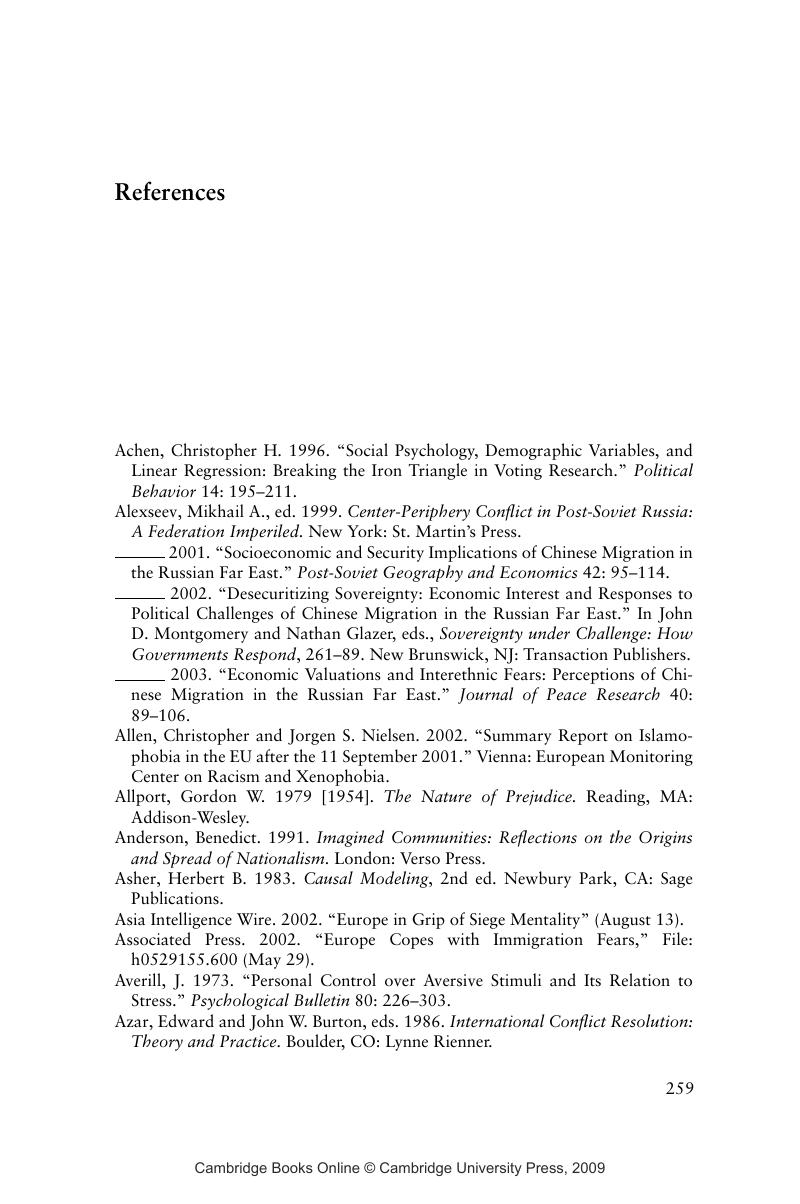Book contents
- Frontmatter
- Contents
- Acknowledgments
- 1 Immigration Phobia and Its Paradoxes
- 2 The Immigration Security Dilemma: Anarchy, Offensiveness, and “Groupness”
- 3 The Two Faces of Socioeconomic Impact Perceptions
- 4 In the Shadow of the “Asian Balkans”: Anti-Chinese Alarmism and Hostility in the Russian Far East
- 5 Who's Behind “Fortress Europe”? Xenophobia and Antimigrant Exclusionism from Dublin to the Danube
- 6 Los Angeles Ablaze: Antimigrant Backlashes in the Nation of Immigrants
- 7 Immigration and Security: How Worst-Case Scenarios Become Self-Fulfilling and What We Can Do About It
- Appendix A Primorskii 2000 Survey: Regression Results
- Appendix B Eurobarometer Survey No. 47.1 (1997): Regression Results
- Appendix C A Journey into Fear: The Immigration Phobia Self-Test
- References
- Index
- References
References
Published online by Cambridge University Press: 22 August 2009
- Frontmatter
- Contents
- Acknowledgments
- 1 Immigration Phobia and Its Paradoxes
- 2 The Immigration Security Dilemma: Anarchy, Offensiveness, and “Groupness”
- 3 The Two Faces of Socioeconomic Impact Perceptions
- 4 In the Shadow of the “Asian Balkans”: Anti-Chinese Alarmism and Hostility in the Russian Far East
- 5 Who's Behind “Fortress Europe”? Xenophobia and Antimigrant Exclusionism from Dublin to the Danube
- 6 Los Angeles Ablaze: Antimigrant Backlashes in the Nation of Immigrants
- 7 Immigration and Security: How Worst-Case Scenarios Become Self-Fulfilling and What We Can Do About It
- Appendix A Primorskii 2000 Survey: Regression Results
- Appendix B Eurobarometer Survey No. 47.1 (1997): Regression Results
- Appendix C A Journey into Fear: The Immigration Phobia Self-Test
- References
- Index
- References
Summary

- Type
- Chapter
- Information
- Immigration Phobia and the Security DilemmaRussia, Europe, and the United States, pp. 259 - 278Publisher: Cambridge University PressPrint publication year: 2005



